Known far and wide for their haunting, eerie calls, Common Loons are true water birds, venturing ashore only to mate and incubate eggs. In monogamous pairs, they raise broods of just 1–2 chicks per year, with a long fledging period of about 12 weeks.
Although loon chicks are capable of diving and swimming within a couple of days of birth, they are easy prey for predators like mink, eagles, snapping turtles, or even other loons. To increase their chances of survival, they often take shelter on their parents’ backs, going for rides around the lake until they are big and strong enough to survive on their own.
Here are five adorable photos from our annual photo contest of loon chicks hitching a “loon-back ride” with one of their parents. The 2020 contest is now open, so submit your beautiful nature photography today!
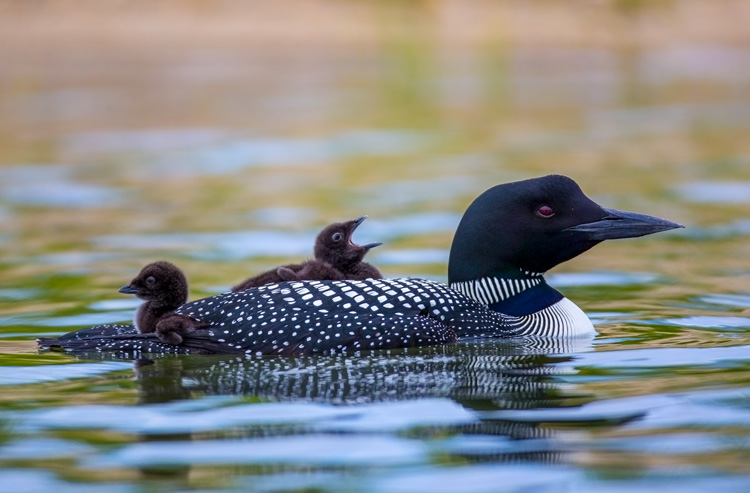
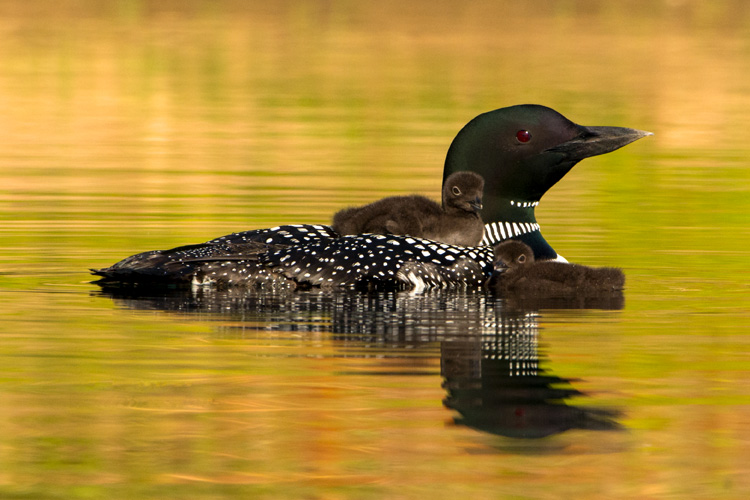
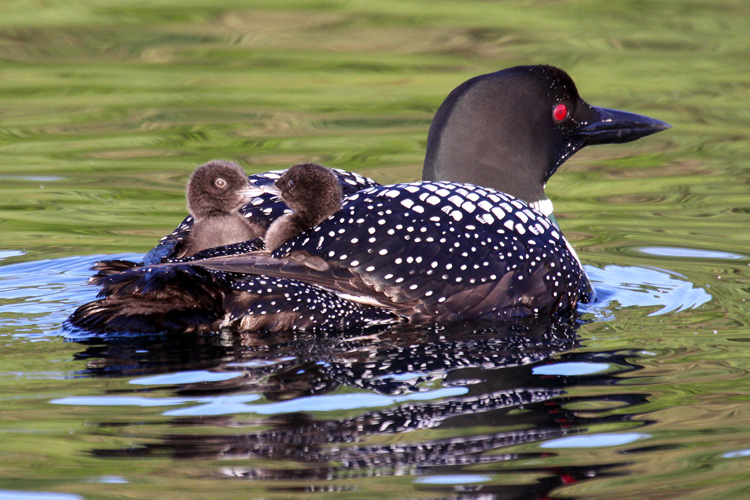
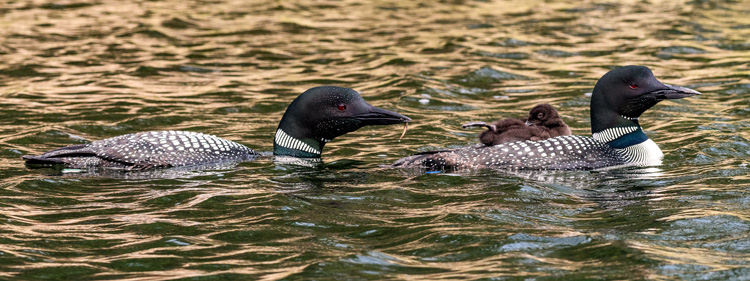



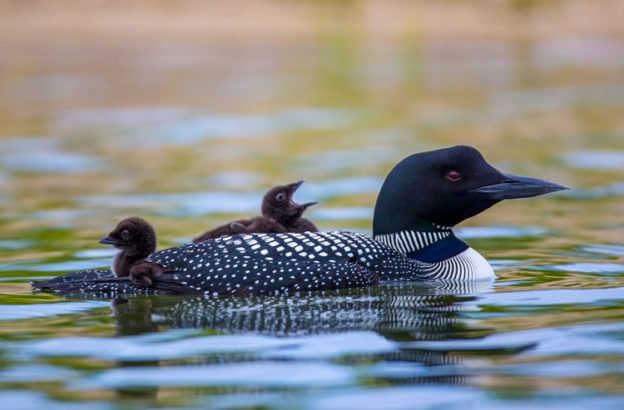
I was lucky enough to go on one of Peter Christoph’s loon photo tours and capture photos of baby loons riding on the parents back, although none as good as the photo of Peter’s shown here. What we learned is that nesting is not the only reason that loons go ashore – we watched both the adults and the little ones go ashore to use the bathroom. Peter said that loons won’t use the water they eat from as their sewer system and they can go ashore a couple of times each day for that reason. Your article also stated that baby loons “often take shelter on their parents’ backs, going for rides around the lake until they are big and strong enough to survive on their own.” What we learned on the tour is that loons ride on their parents back for only two weeks, but are not able to survive on their own for 2-3 months. So as a point of clarification – when the loon chicks are done riding on parents back after two weeks, they are still not able to survive in their own. Peter said the chicks will continue to hang out with their parents a) to fend off eagles, and b) to catch fish for their young. Without their parents to hunt fish for them the young loons would quickly starve to death. A third way the parents help chicks survive is to ward off speeding fishing boats that are not paying attention at all to baby loons that are often in their path.
I also cannot observe birds in the fields and waters as I did in the past. I monitored Commonly Loons in many MA locations. I also believe it was the Common Loon that sparked my interest in birding when on a trip in NH where everywhere one would see them depicted.
I love loons. Ever since — 50 years ago — I heard my first loon call at a lake in Maine I have loved them. I have paintings of them in various places in the house. We don’t seem to have them this far south (south central Massachusetts) and we can’t travel now but I miss the haunting calls across the lake in the evening.
Great photos! Will keep a lookout for loons on our local lakes in western Mass.!